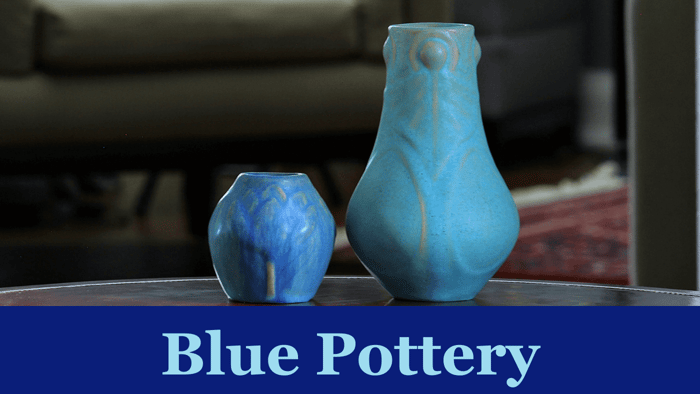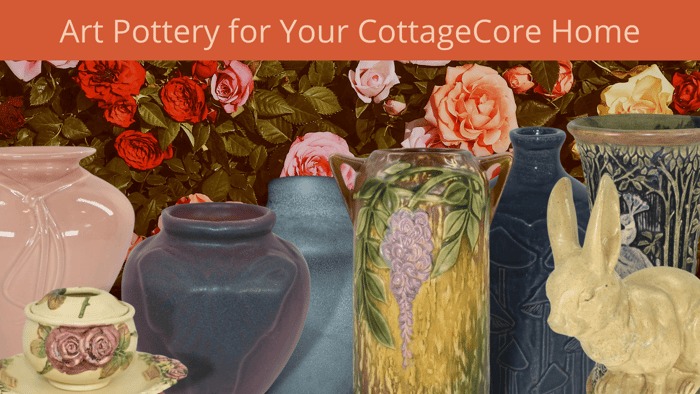Traditional blue vintage art pottery of various kinds is enormously popular. It is highly collectible and, depending on its origin, comes in various forms, from vases, planters, jardinieres, ewers, pitchers, wall pockets, wall plaques, plates, and a wide selection of ornamental items.

Brush McCoy vintage Art Deco pottery vase from the 1930s features a subtle embossed floral pattern. Photo: Just Art Pottery
Blue art pottery, including blue china, comes from all parts of the world and includes both handmade and mass-produced items.
When you start exploring, you will find infinite variations in blue. For instance, old Persian pottery, including art tiles, often features a deep turquoise mixture of blue and green. Many beautiful Art Deco, Art Nouveau, and Arts and Crafts pieces are also in shades of turquoise.

A Dryden Arkansas frosted blue flowing glaze Art Deco vase with a mix of turquoise-blue shades. Photo: Just Art Pottery

An intriguing 1914 Rookwood vintage Arts and Crafts matte blue hand-carved pottery vase. Photo: Just Art Pottery

An antique eosin blue, gold-luster, Art Nouveau pottery vase from the Hungarian Zsolnay factory made in about 1900. Photo: Just Art Pottery
About the Color Blue
It’s common knowledge that there are a huge number of different blue colors that are vastly different from one another. When it comes to painting and related interior design elements, the natural starting point for blue is the primary color that features in the color wheel.
Originally developed by Isaac Newton in the 17th century, the color wheel features 12 basic colors, of which blue, yellow, and red are the primary colors. It’s basically a spectrum, like a kind of rainbow, but it’s joined at both ends.
There are also three secondary colors, each created by mixing two adjoining primary colors together. Green and violet are on either side of blue, with orange between red and yellow. Then there are six tertiary colors made by mixing primary and secondary colors closest to one other. These include blue-violet.
There are no pastel shades because white is considered a non-color, and it doesn't feature on the color wheel.
Cobalt blue is the closest color to the traditional color wheel’s pure primary blue.
Collectible Art Pottery & Ceramics
Some people define art pottery as handcrafted items made in relatively small quantities from about 1807 to 1930. This includes the Art Deco, Art Nouveau, and Arts and Crafts periods that Just Art Pottery specializes in. But we offer a wide range of other styles too, so you will find many other blue options from different eras.

A gorgeous blue Newcomb College vintage Arts and Crafts pottery vase made in 1931. Photo: Just Art Pottery
Collecting Blue Art Pottery
The sky really is the limit when it comes to blue art pottery. Some items, including southwestern studio pottery, are handmade. This means that every piece is unique. Some other types are molded and glazed in factories that mass-produced collectible items like Roseville Pottery.

We come across some gems that we offer for sale, and we have a vast range. But we cannot guarantee that we will have specific items in stock at any one time. Some are rare, but even those that were mass-produced in the 20th century are highly collectible.
We invite you to explore our stock of blue art pottery. Just remember, it’s changing all the time.





